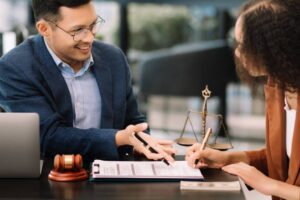In the digital age, where content is king and the internet is its realm, understanding the nuances of copyright and fair use is paramount for creators, educators, businesses, and consumers alike. The landscape of intellectual property rights is complex, but navigating it effectively can prevent legal disputes and foster innovation and creativity.
This article aims to demystify these concepts, outlining the boundaries and emphasizing the importance of informed usage of copyrighted materials.
Table of Contents
ToggleWhat is Copyright?
Copyright is a legal mechanism designed to protect original works of authorship, including literary, dramatic, musical, and artistic works. It grants the creator exclusive rights to use, reproduce, distribute, perform, display, or license their work. Copyright law encourages creativity by providing creators with a way to control and benefit from their creations.
The Essence of Fair Use
Fair Use is a legal doctrine that allows limited use of copyrighted material without permission from the copyright holder. This doctrine is vital for educational, news reporting, commentary, and research purposes. It balances the rights of the copyright owner and the public’s interest, promoting freedom of expression and enabling access to information and culture.
Key Factors of Fair Use
Understanding the fair use doctrine involves evaluating four factors:
Purpose and Character of the Use: Non-commercial, educational, or transformative uses are more likely to be considered fair use.
Nature of the Copyrighted Work: Using factual work like a news article is more likely to be fair than using a highly creative work like a novel or song.
Amount and Substantiality: Using small portions or non-central parts of work favors fair use, but even a small amount can be too much if it’s the “heart” of the work.
Effect on the Work’s Value: If the use adversely affects the market for the original work, it is less likely to be seen as fair use.
Navigating Copyright and Fair Use in Practice
To navigate the complexities of copyright and fair use, consider the following guidelines:
Educate Yourself and Others: Awareness of the laws and their application is the first step in avoiding infringement.
Seek Permission When in Doubt: If you’re unsure whether your use qualifies as fair, obtaining permission from the copyright holder is the safest course of action.
Use Licensed or Public Domain Works: Utilize resources that are explicitly available for free use or are in the public domain.
Consider the Impact: Reflect on how your use of the material might affect its market value and the interests of the copyright owner.
The Importance of Legal Guidance
Given the intricacies of copyright and fair use, seeking professional legal advice is crucial, especially for businesses and content creators. Intellectual
property attorneys can provide guidance tailored to specific situations, ensuring compliance with the law while supporting innovation and creativity.
An Essential in Today’s Digital landscape
Understanding copyright and fair use is essential in today’s digital landscape. By respecting the boundaries of copyright and leveraging the fair use doctrine responsibly, we can ensure a vibrant culture of creativity and innovation. For individuals and businesses navigating these complex waters, the expertise of intellectual property lawyers is invaluable.
Sanchelima & Associates, P.A., offers comprehensive services in copyright and intellectual property law, assisting clients in protecting their creative works and navigating the intricacies of fair use. Our experienced team is committed to providing tailored solutions that align with your unique needs. Whether you’re an artist, educator, business, or creator, our goal is to empower you with the knowledge and support necessary to thrive in the digital age.
For more information or to schedule a consultation, please contact us at info@sanchelima.com or call us at 305-447-1617. Our expertise is your safeguard in the ever-evolving scope of intellectual property.


